-
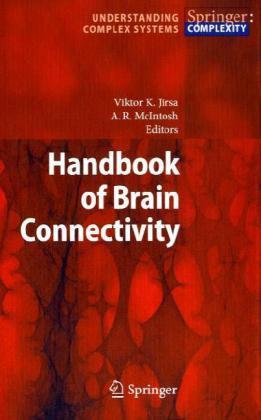
Handbook of Brain Connectivity
Our contemporary understanding of brain function is deeply rooted in the ideas of the nonlinear dynamics of distributed networks. Cognition and motor coordination seem to arise from the interactions of local neuronal networks, which themselves are connected in large scales across the entire brain. The spatial architectures between various scales inevitably influence the dynamics of the brain and thereby its function. But how can we integrate brain connectivity amongst these structural and functional domains? Our Handbook provides an account of the current knowledge on the measurement, analysis and theory of the anatomical and functional connectivity of the brain. All contributors are leading experts in various fields concerning structural and functional brain connectivity. In the first part of the Handbook, the chapters focus on an introduction and discussion of the principles underlying connected neural systems. The second part introduces the currently available non-invasive technologies for measuring structural and functional connectivity in the brain. Part three provides an overview of the analysis techniques currently available and highlights new developments. Part four introduces the application and translation of the concepts of brain connectivity to behavior, cognition and the clinical domain. -
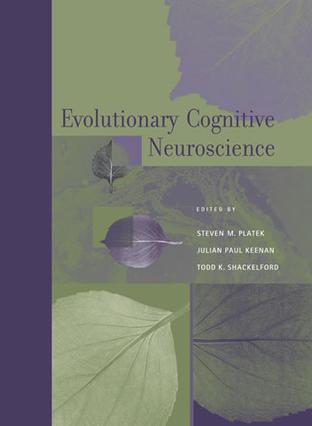
Evolutionary Cognitive Neuroscience
Since Darwin we have known that evolution has shaped all organisms and that biological organs--including the brain and the highly crafted animal nervous system--are subject to the pressures of natural and sexual selection. It is only relatively recently, however, that the cognitive neurosciences have begun to apply evolutionary theory and methods to the study of brain and behavior. This landmark reference documents and defines the emerging field of evolutionary cognitive neuroscience. Chapters by leading researchers demonstrate the power of the evolutionary perspective to yield new data, theory, and insights on the evolution and functional modularity of the brain. Evolutionary cognitive neuroscience covers all areas of cognitive neuroscience, from nonhuman brain-behavior relationships to human cognition and consciousness, and each section of Evolutionary Cognitive Neuroscience addresses a different adaptive problem. After an introductory section that outlines the basic tenets of both theory and methodology of an evolutionarily informed cognitive neuroscience, the book treats neuroanatomy from ontogenetic and phylogenetic perspectives and explores reproduction and kin recognition, spatial cognition and language, and self-awareness and social cognition. Notable findings include a theory to explain the extended ontogenetic and brain development periods of big-brained organisms, fMRI research on the neural correlates of romantic attraction, an evolutionary view of sex differences in spatial cognition, a theory of language evolution that draws on recent research on mirror neurons, and evidence for a rudimentary theory of mind in nonhuman primates. A final section discusses the ethical implications of evolutionary cognitive neuroscience and the future of the field. -
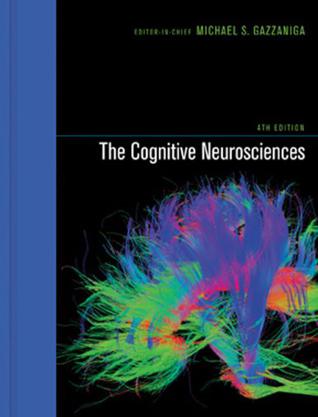
The Cognitive Neurosciences, 4th Edition
Each edition of this classic reference has proved to be a benchmark in the developing field of cognitive neuroscience. The fourth edition of The Cognitive Neurosciences continues to chart new directions in the study of the biologic underpinnings of complex cognition—the relationship between the structural and physiological mechanisms of the nervous system and the psychological reality of the mind. The material in this edition is entirely new, with all chapters written specifically for it. Since the publication of the third edition, the field of cognitive neuroscience has made rapid and dramatic advances; fundamental stances are changing and new ideas are emerging. This edition reflects the vibrancy of the field, with research in development and evolution that finds a dynamic growth pattern becoming specific and fixed, and research in plasticity that sees the neuronal systems always changing; exciting new empirical evidence on attention that also verifies many central tenets of longstanding theories; work that shows the boundaries of the motor system pushed further into cognition; memory research that, paradoxically, provides insight into how humans imagine future events; pioneering theoretical and methodological work in vision; new findings on how genes and experience shape the language faculty; new ideas about how the emotional brain develops and operates; and research on consciousness that ranges from a novel mechanism for how the brain generates the baseline activity necessary to sustain conscious experience to a bold theoretical attempt to make the problem of qualia more tractable. -
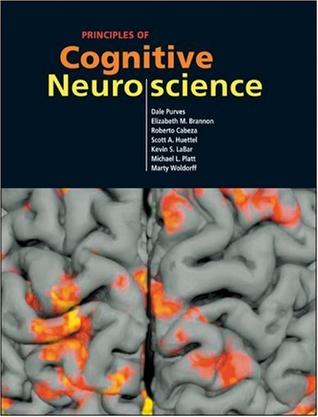
Principles of Cognitive Neuroscience
This book, written by seven leaders in the field, is intended to inform readers at all levels about the growing canon of cognitive neuroscience, and to make clear the many challenges that remain to be solved by the next generation. Chapters begin with a brief introduction and end with a summary; in addition to the narrative text, richly illustrated in full color, each chapter includes boxed material on topics of special interest. Extensive references to useful reviews, important original papers, and books are provided. In addition to an appendix that covers the essentials of neural signaling and an extensive glossary of key terms, each copy comes with Sylvius 4, which includes an interactive tutorial on human neuroanatomy and a digital atlas of human brain structure. -
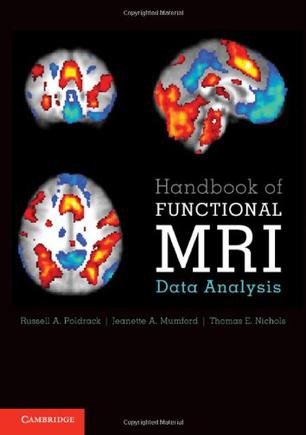
Handbook of Functional MRI Data Analysis
Functional magnetic resonance imaging (fMRI) has become the most popular method for imaging brain function. Handbook of Functional MRI Data Analysis provides a comprehensive and practical introduction to the methods used for fMRI data analysis. Using minimal jargon, this book explains the concepts behind processing fMRI data, focusing on the techniques that are most commonly used in the field. This book provides background about the methods employed by common data analysis packages including FSL, SPM and AFNI. Some of the newest cutting-edge techniques, including pattern classification analysis, connectivity modeling and resting state network analysis, are also discussed. Readers of this book, whether newcomers to the field or experienced researchers, will obtain a deep and effective knowledge of how to employ fMRI analysis to ask scientific questions and become more sophisticated users of fMRI analysis software. -
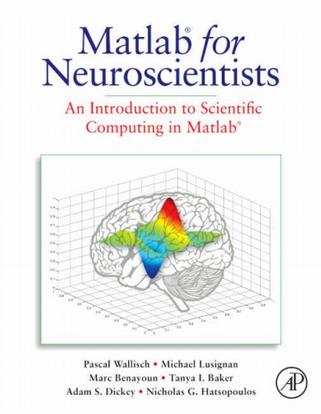
Matlab for Neuroscientists
Matlab is the accepted standard for scientific computing, used globally in virtually all Neuroscience and Cognitive Psychology laboratories. For instance, SPM, the most used software for the analysis and manipulation of fMRI images in research and clinical practice is fully programmed in matlab, and its use of the possibility to allow for sophisticated software modules to be freely added to the software has established it as the by far dominant software in the field. Many universities now offer, or are beginning to offer matlab introductory courses in their neuroscience and psychology programs. Nevertheless, so far there hasn't been a textbook specific to this market, and the use of the plethora of existing engineering focused Matlab textbooks is notoriously difficult for teaching the package in those environments. This is the first comprehensive teaching resource and textbook for the teaching of Matlab in the Neurosciences and in Psychology. Matlab is unique in that it can be used to learn the entire empirical and experimental process, including stimulus generation, experimental control, data collection, data analysis and modeling. Thus a wide variety of computational problems can be addressed in a single programming environment. The idea is to empower advanced undergraduates and beginning graduate students by allowing them to design and implement their own analytical tools. As students advance in their research careers, they will have achieved the fluency required to understand and adapt more specialized tools as opposed to treating them as "black boxes". Virtually all computational approaches in the book are covered by using genuine experimental data that are either collected as part of the lab project or were collected in the labs of the authors, providing the casual student with the look and feel of real data. In some rare cases, published data from classical papers are used to illustrate important concepts, giving students a computational understanding of critically important research. The ability to effectively use computers in research is necessary in an academic environment that is increasingly focused on quantitative issues. Matlab represents an ideal language of scientific computing. It is based on powerful linear algebra structures which lend themselves to empirical problems on the one hand, while at the same time allowing the student to make rapid problem-oriented progress (particularly in terms of visualization of data points) without having to lose focus by worrying too much about memory allocation and other "plumbing" minutiae as would be required in other, more low-level programming languages such as C or C++. Currently, there are several books that provide introductions to Matlab that are either too generic and fundamental or too irrelevant for neuroscientists and cognitive psychologists who typically face a very circumscribed range of problems in data collection, data analysis and signal processing. Some non-book tutorials and primers that are in use in the community are typically out of date. Matlab versions are usually not backwards compatible. Many commands and functions used in older tutorials and primers, such as "flops" won't work in current versions of Matlab, necessitating a book that is timely and up-to-date. The complete lack of a relevant resource in this area, combined with a clearly felt need for such a text provided the primary and initial impetus for this project. The authors provide such a dearly needed resource adapting and pooling materials that developed for and used in highly rated courses involving the use of Matlab in Neuroscience at the University of Chicago. Two co-authors (PW and NH) have presented their respective work on teaching Matlab at national meetings and two of the co-authors (PW and MB) were awarded the coveted University of Chicago's Booth Prize for excellence in teaching these courses. (http://chronicle.uchicago.edu/070524/boothprize.shtml ). * The first comprehensive textbook on Matlab with a focus for its application in Neuroscience * Problem based educational approach with many examples from neuroscience and cognitive psychology using real data * Authors are award winning educators with strong teaching experience * Instructor's Website with figurebank, additional problems and examples, solutions, etc